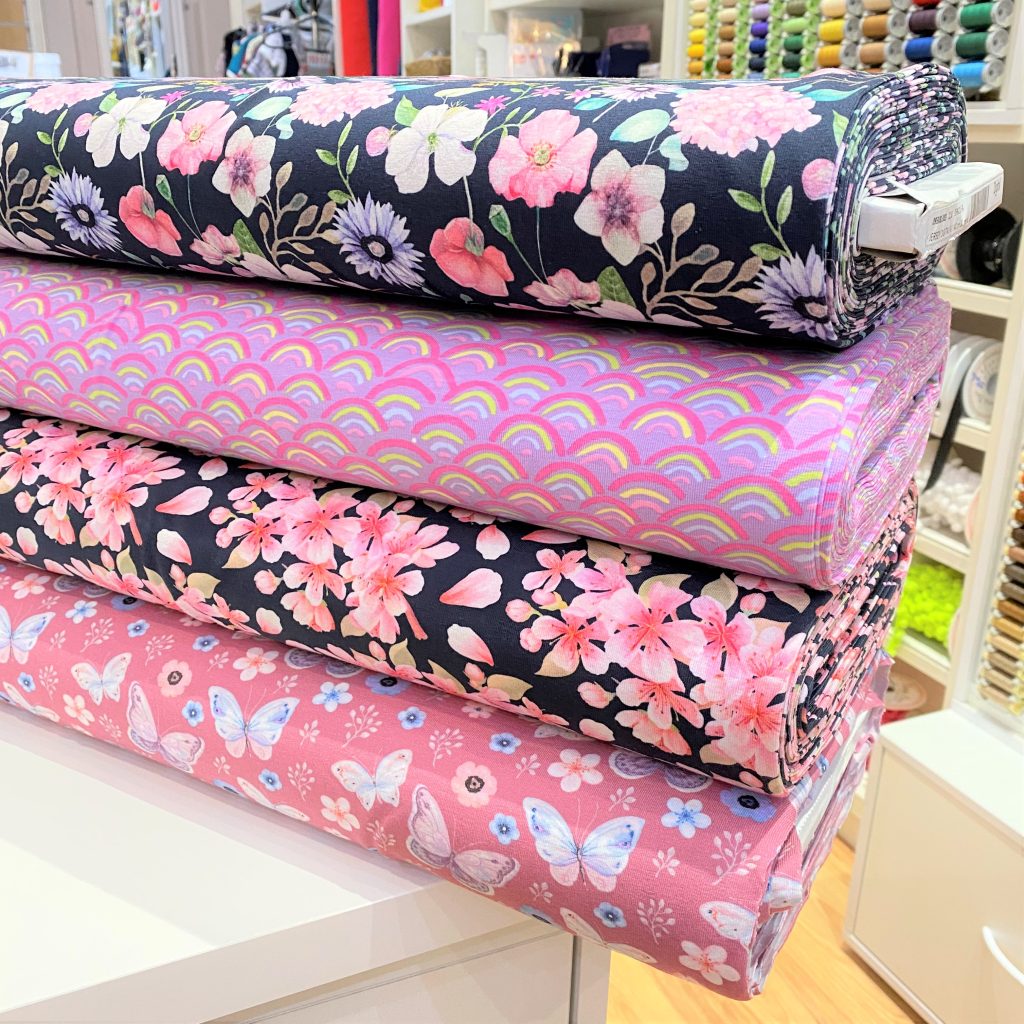
Garments made from knit (jersey) fabrics are relatively new to society and with them have come a whole new set of sewing skills required by dressmakers both commercial and domestic.
These techniques are simple and knit garments are quicker to make than their woven fabric counterparts. As they are manufactured by a process of machine knitting, the biggest bonus is that they require less fitting because they easily stretch around our 3D shapes.
To fully embrace the skills required to sew a jersey fabric, choosing the correct fabric for the garment is arguably the most important step. But what is the difference between all the different fabrics?
Cotton jersey is most commonly used and one of the easiest to sew. But what is it and what garments can be made with it?
Fabric Weight
Cotton jersey fabrics are classed as light to medium-weight and have a gsm (grams per square metre) of approximately 200. They are often referred to as a T-shirt fabric.
Natural Fibres
For anyone conscious about the content of fabrics and preferring to wear natural fibres, cotton jersey is a great choice.
Sometimes they are blended with other fibres such as polyester, wool or linen, so always check the label.
Organic cotton jersey fabrics are becoming easier to source, making them popular with eco-conscious sewists. Look out for GOTS labels that can that can be found printed along the selvedge of the fabric.
What is GOTS?
Referred to as GOTS, the Global Organic Textile Standard is a “worldwide leading textile processing standard for organic fibres, including ecological and social criteria, backed up by independent certification of the entire textile supply chain. GOTS certified final products may include fibre products, yarns, fabrics, clothes, home textiles, mattresses, personal hygiene products, as well as food contact textiles and more.
Having one common standard means textile processors and manufacturers can export their fabrics and garments with one organic certification that is accepted in all major markets. This transparency also gives consumers the power to choose truly organic products sourced from green supply chains.”
Stretch Factor
Due to their knitted nature, cotton jersey fabrics tend to have a good amount of stretch across their width (selvedge to selvedge). They often have little stretch parallel to the selvedge. These factors need to be taken into account when cutting a pattern out of the fabric.
Many good quality cotton jersey fabrics contain approximately 5% elastane or spandex, giving them an increased stretch factor. This enables them to keep their shape for longer and the fabric will ‘ping’ back to it’s original size after being stretched.
Washing
Cotton jersey can be machine washed and we always highly recommend that you pre-wash your fabric before cutting out. This will remove any residues in the fabric and possible shrinkage will occur before the garment is cut out and constructed.
Dry-cleaning and tumble drying are not recommended.
Sewing with Cotton Jersey
Being one of the easiest jersey fabrics to sew makes cotton jersey a popular choice, particularly with sewists new to sewing with knits.
The edges can be prone to curling towards the right side of the fabric when cut, but they can be easily pinned out of the way.
We regularly run our popular Knit/Jersey Fabric Masterclass where you will learn all the skills needed to easily sew up all types of jersey fabric. It is easy to sign up and you will be so pleased you did!
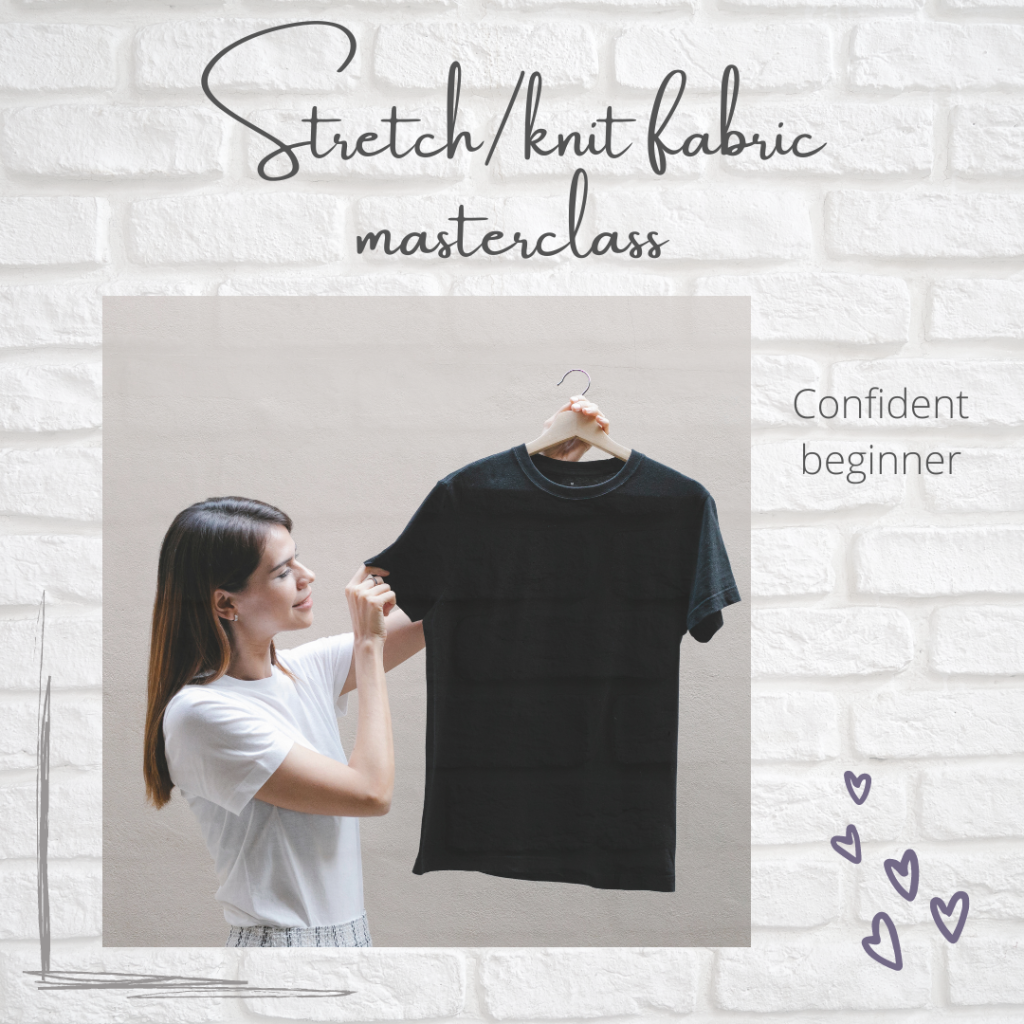
What To Make With Cotton Jersey
Being one of our favourite fabrics, we love to stock a wide range of suitable patterns for you to choose from.
The best garments are T-shirts, tunics, dresses, wrap dresses, light-weight sweaters and children’s clothing. Take a look at some of our favourites.
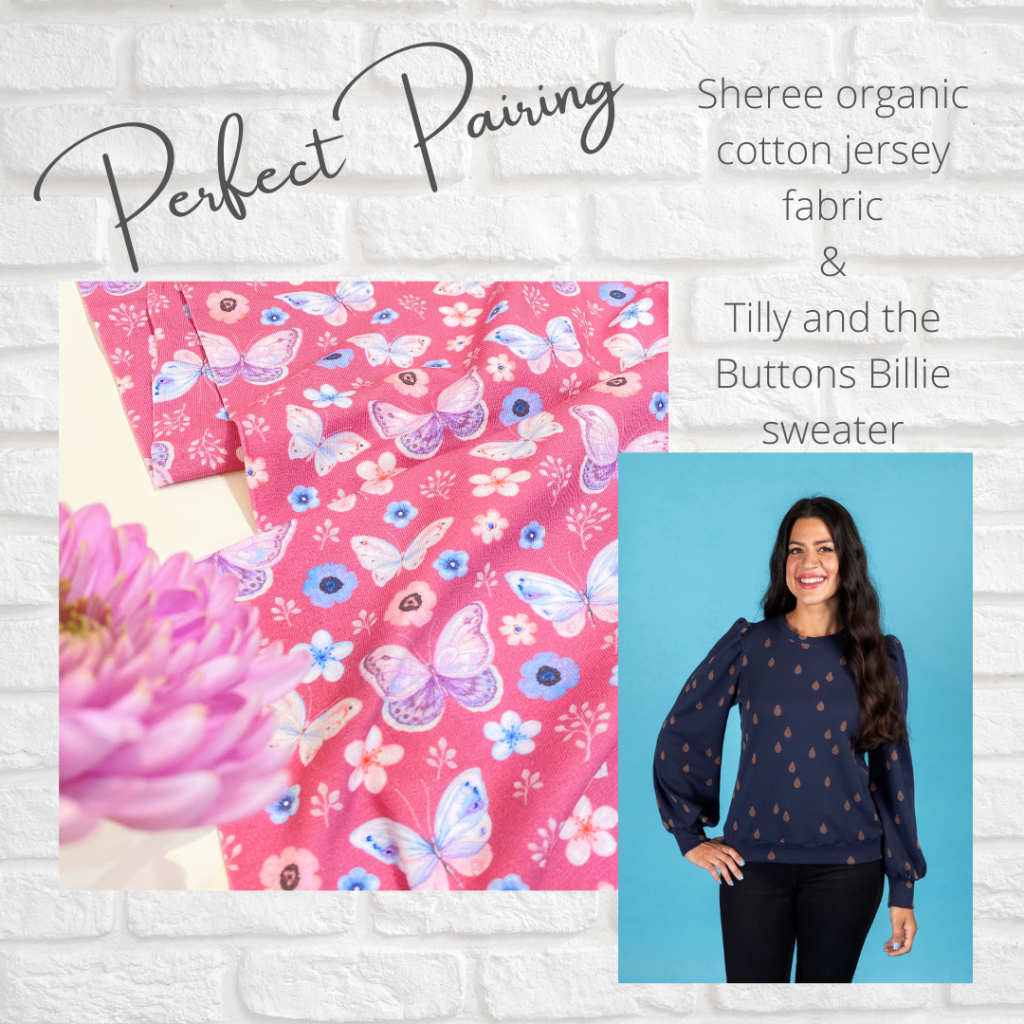
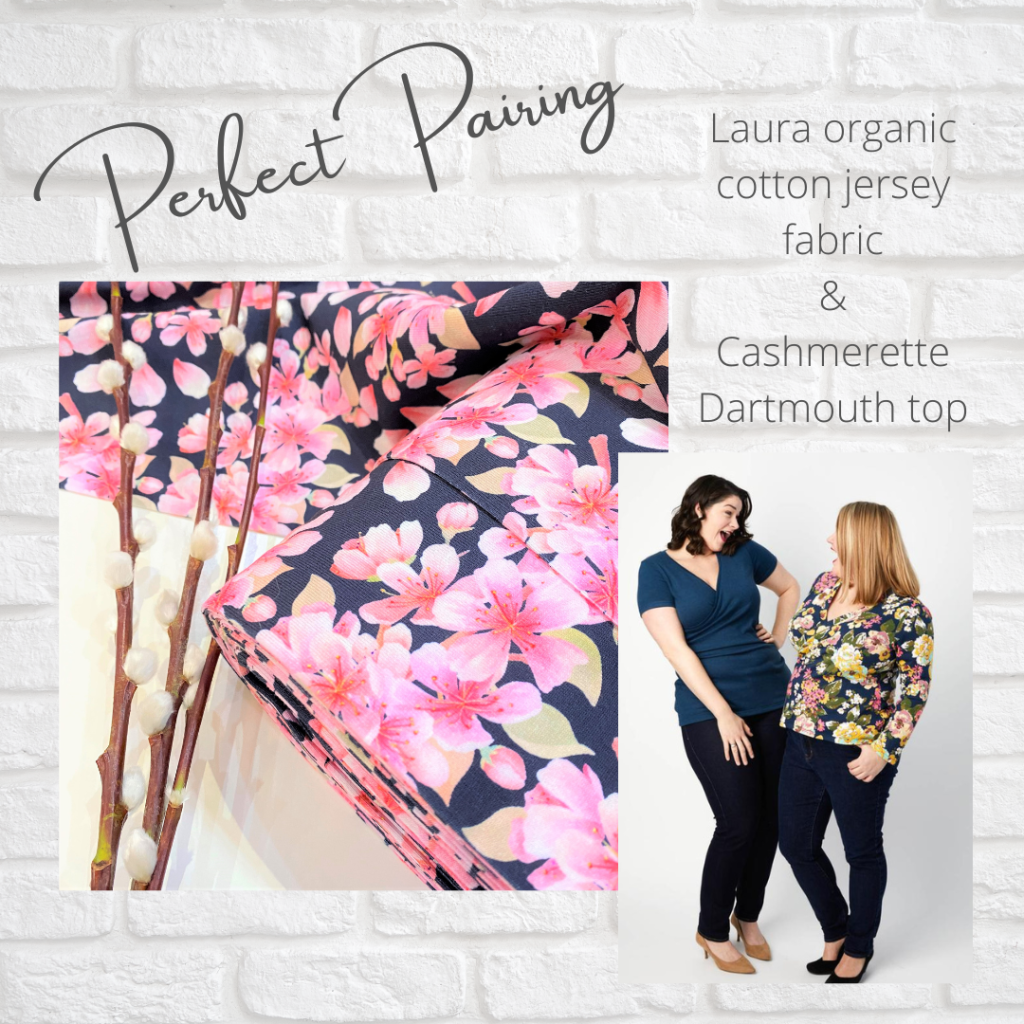
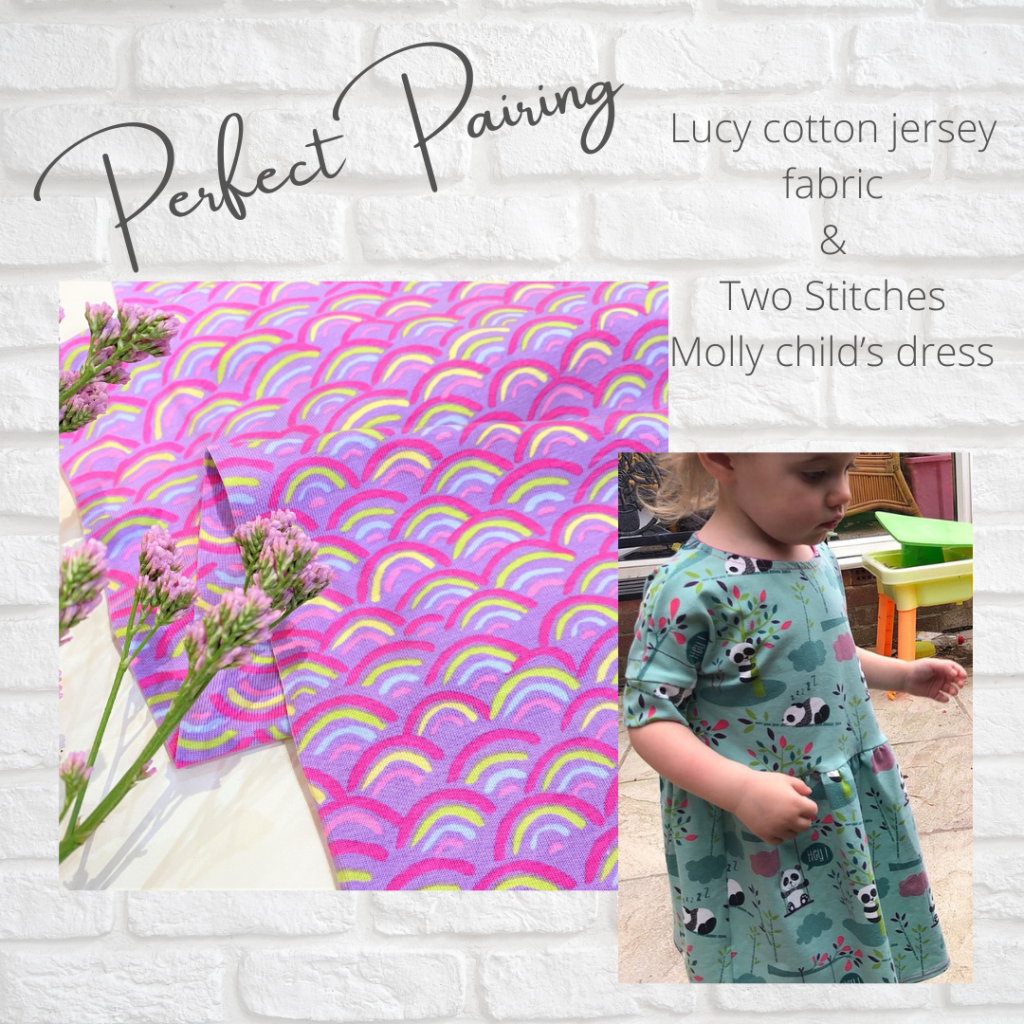
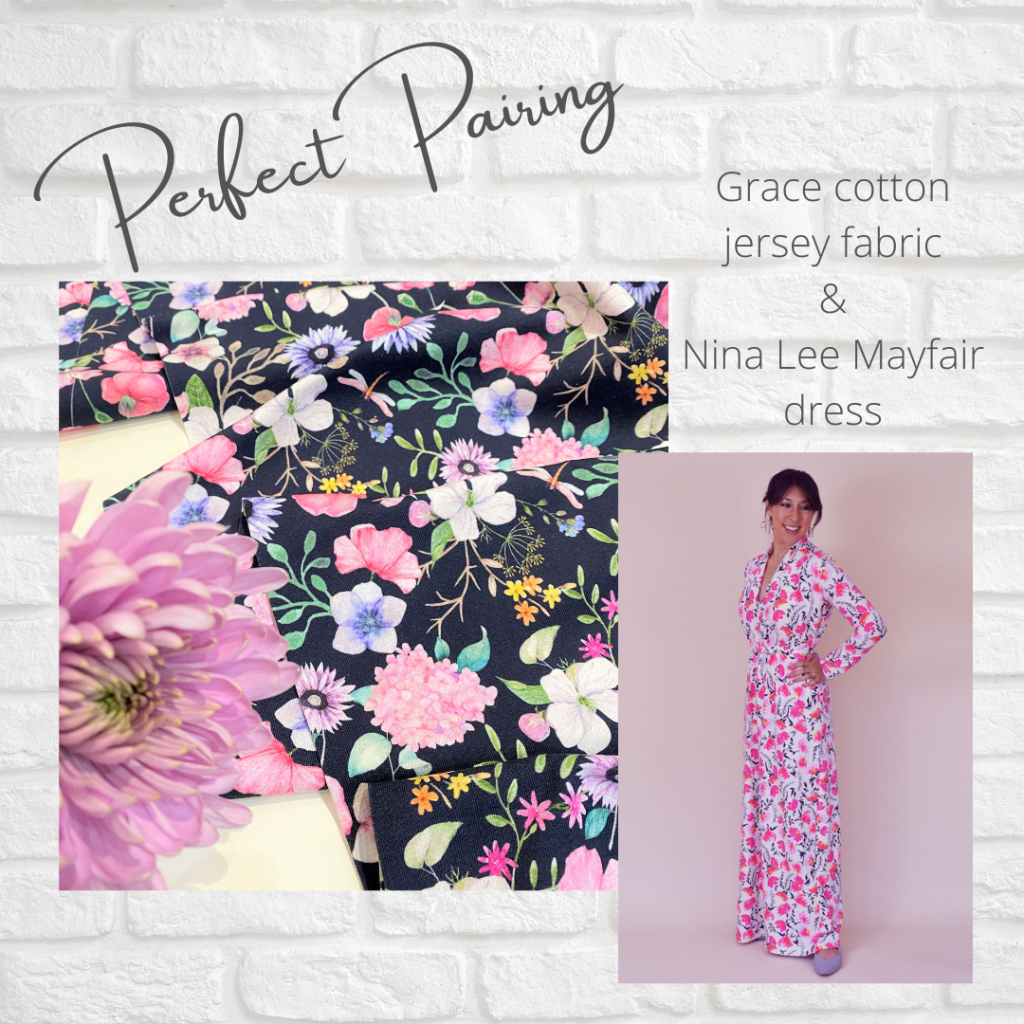
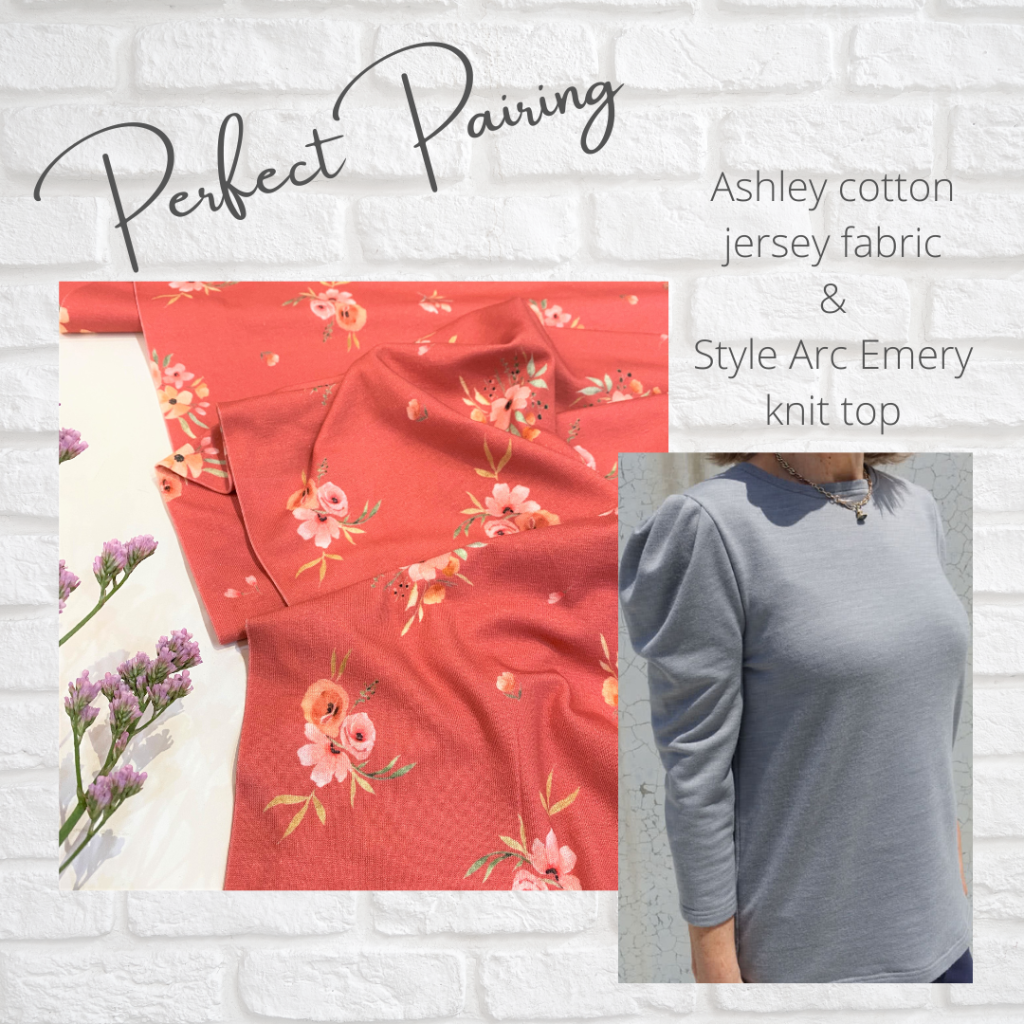
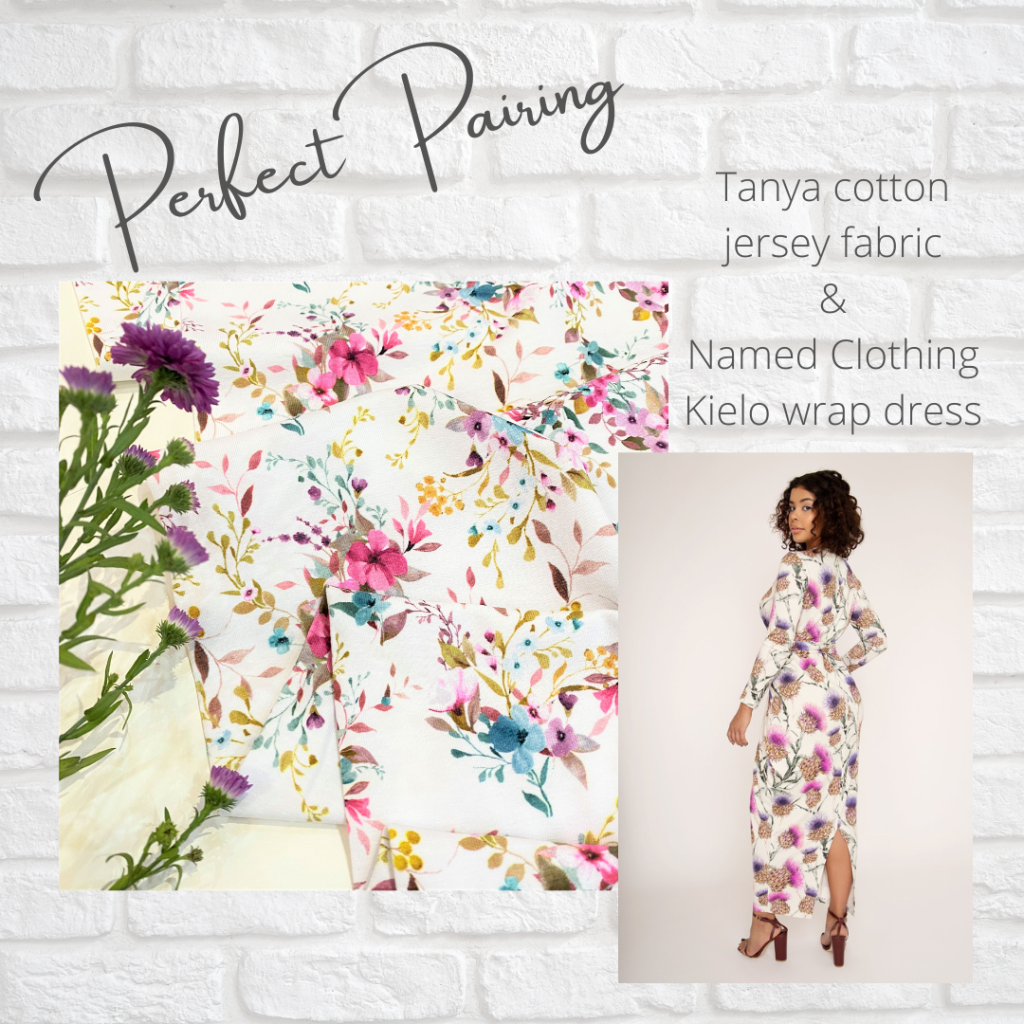
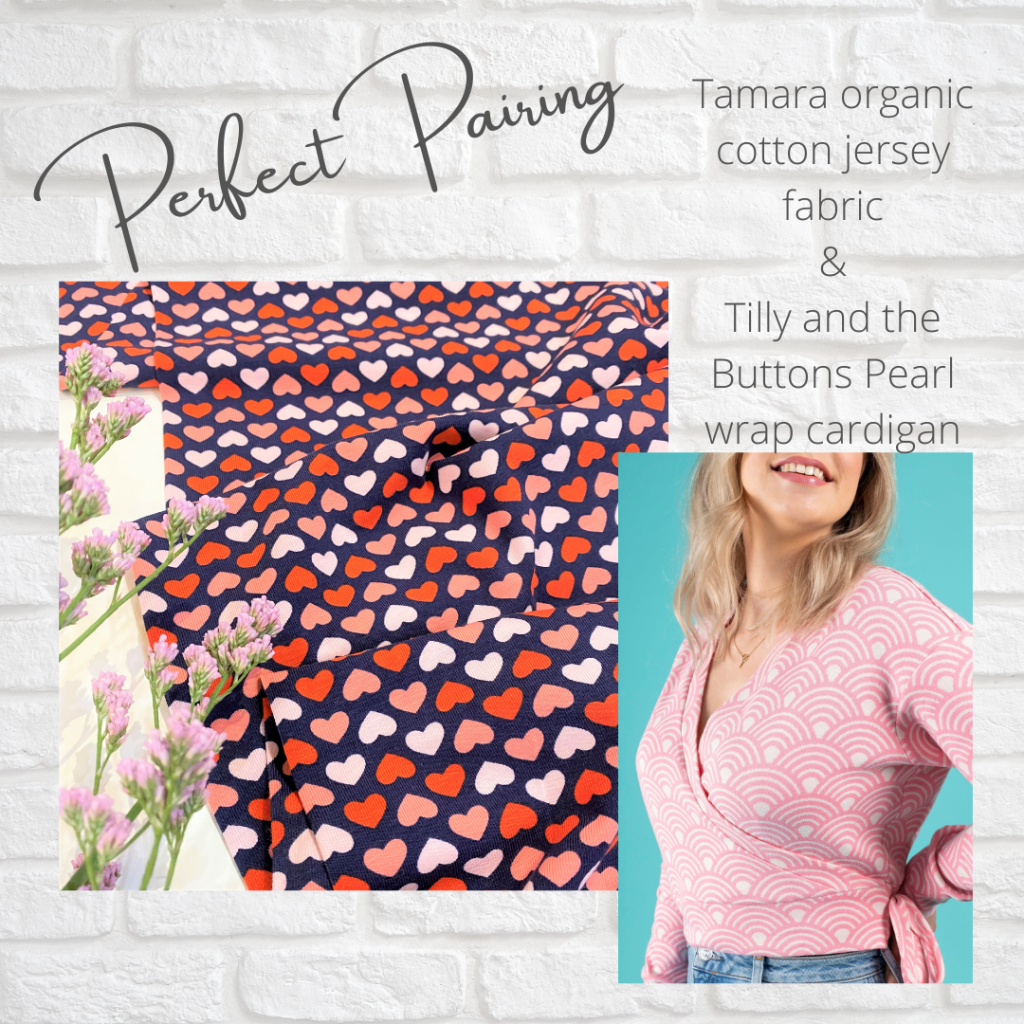
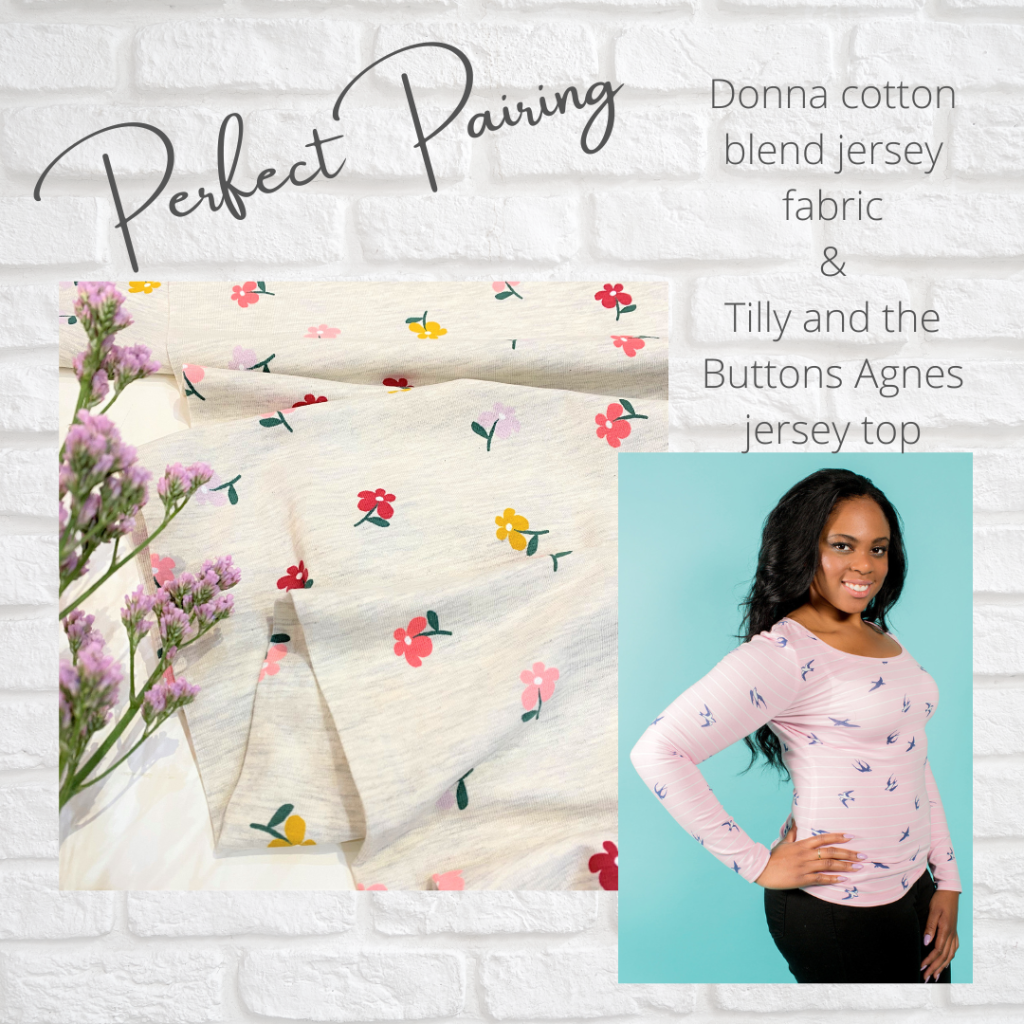
Of course there are many, many more suitable options and if you need any advice with choosing a pattern, we are always happy to help.
We regularly add new cotton jersey fabrics to our shelves. Watch our social media pages for details or check out our website.
Happy sewing,
Leanne